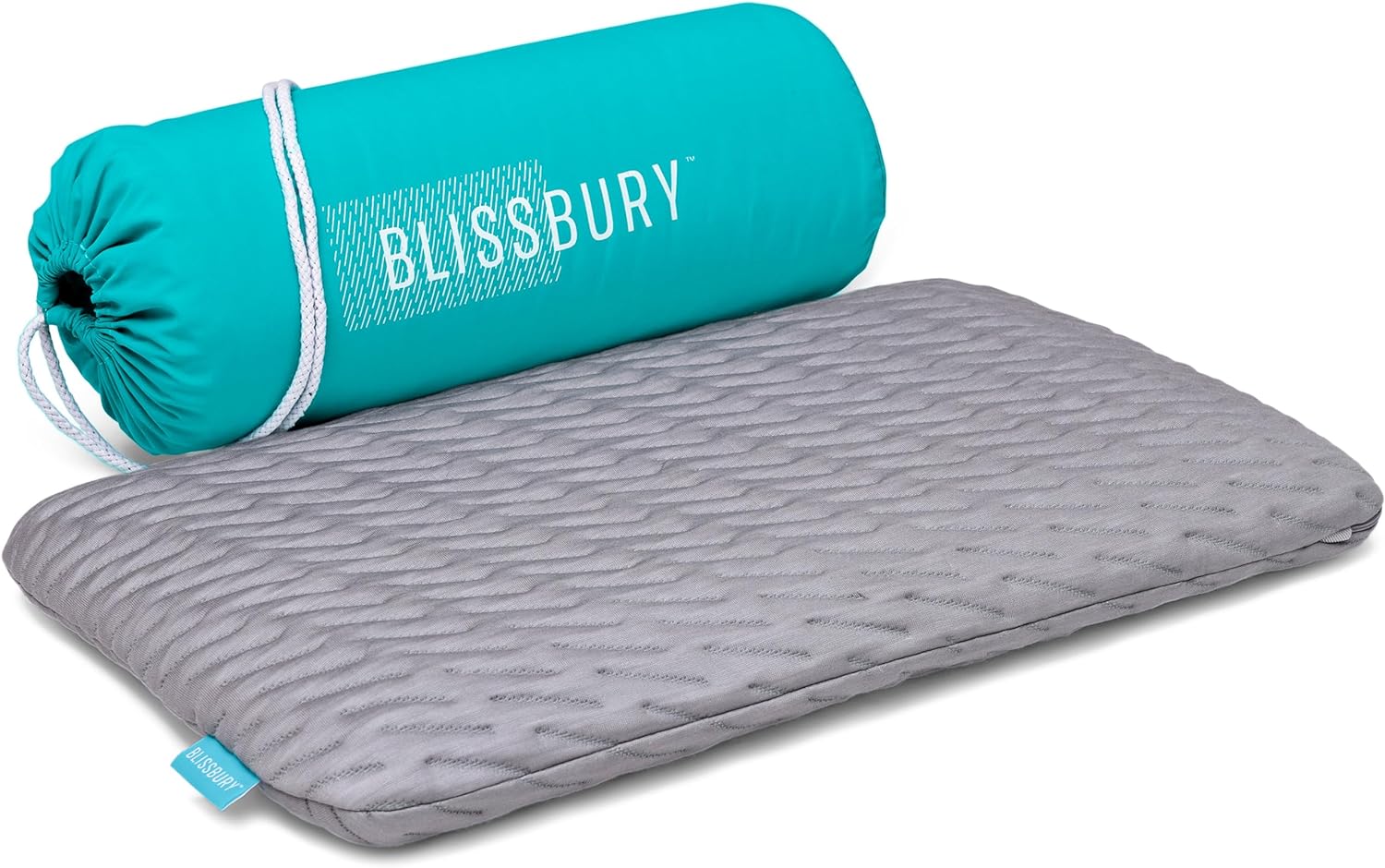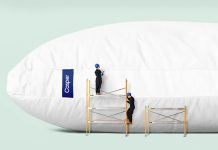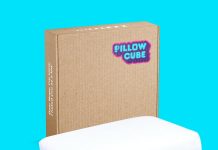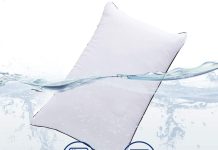Taking care of your pillows is essential for a good night’s sleep and overall hygiene. Knowing how to properly wash foam, down alternative, and memory foam pillows can help extend their lifespan and keep them clean and fresh. In this article, you will discover simple yet effective techniques to wash these types of pillows, ensuring that you can sleep comfortably and breathe easy. Say goodbye to dirt, odors, and allergens, and say hello to a rejuvenating night’s rest.
Review contents
Foam Pillows
Preparing for Washing
Before washing your foam pillows, it’s important to prepare them properly. Start by removing any pillowcases or covers and inspect the pillows for any stains or spots. If you notice any, you can treat them with a gentle stain remover before washing. Make sure to read the care instructions on the pillow’s label to ensure you are using the correct cleaning method.
Hand Washing
Foam pillows can be hand washed if you prefer a more delicate cleaning method. Fill a basin or sink with lukewarm water and add a mild detergent. Gently agitate the water to create suds. Submerge the pillow and squeeze it gently to ensure it absorbs the soapy water. Let it soak for about 15 minutes, then drain the water and rinse the pillow thoroughly with clean water. Squeeze out any excess water, taking care not to wring or twist the pillow which could damage its structure.
Machine Washing
Foam pillows can also be washed in a machine, but it’s important to take a few precautions. Use a front-loading machine to minimize the risk of agitation. Place the pillows in the machine, making sure not to overcrowd it. Add a small amount of mild detergent and set the machine to a gentle cycle with cold water. Avoid using bleach or harsh chemicals as they can degrade the foam. Once the cycle is complete, run another rinse cycle to ensure all the detergent is removed.
Drying
When it comes to drying foam pillows, it’s best to air-dry them to prevent damage. Lay the pillows flat on a clean towel or a drying rack in a well-ventilated area. Rotate the pillows periodically to ensure even drying. Avoid exposing the pillows to direct sunlight as it can cause discoloration. It may take a few days for the pillows to completely dry, so be patient and resist the urge to use them until they are fully dry.
Maintaining Foam Pillows
To keep your foam pillows in the best possible condition, there are a few maintenance tips you can follow. Regularly fluff and rotate the pillows to prevent them from becoming flat and lumpy. Use a pillowcase or cover to protect the pillows from dust, sweat, and oils. If spills or stains occur, address them promptly to prevent them from setting. It’s also a good idea to vacuum your pillows occasionally to remove any dust or debris that may have accumulated.
Down Alternative Pillows
Checking the Care Label
Before washing your down alternative pillows, always check the care label for specific instructions. Different brands and types of pillows may have different requirements, so it’s essential to follow the guidance provided.
Preparing for Washing
To prepare your down alternative pillows for washing, remove any pillowcases or covers. Examine the pillows for any stains, and pretreat them if necessary. Pretreating involves applying a stain remover or a mild detergent directly to the stained area and gently rubbing it in. Allow the stain remover to sit for the recommended time before moving on to washing.
Hand Washing
If you prefer a gentle approach, hand washing down alternative pillows is an option. Fill a basin or sink with lukewarm water and add a small amount of mild detergent. Submerge the pillow and gently agitate the water to create suds. Allow the pillow to soak for about 15 to 20 minutes, then drain the water and rinse the pillow thoroughly with clean water. Squeeze out any excess water, being careful not to twist or wring the pillow.
Machine Washing
Most down alternative pillows can be safely machine washed, but always refer to the care label for specific instructions. Place the pillows in the machine, ensuring that there is enough space for them to move freely. Add a small amount of mild detergent and set the machine to a gentle cycle with cold water. Avoid using bleach or fabric softeners as they can damage the pillows. Once the cycle is complete, run an additional rinse cycle to remove any leftover detergent.
Drying
To dry down alternative pillows, it’s best to air-dry them. Place the pillows in a well-ventilated area or outdoors on a clean towel or drying rack. Ensure they are not exposed to direct sunlight as it can cause discoloration. Fluff and rotate the pillows periodically to facilitate even drying. Depending on the weather and humidity, it may take a couple of days for the pillows to dry completely.
Maintaining Down Alternative Pillows
To keep your down alternative pillows in good condition, regular maintenance is important. Fluff them daily to maintain their shape and prevent clumping. Use pillowcases or covers to protect them from dirt and oils. If any spills or stains occur, address them promptly to prevent them from setting. It’s also a good idea to occasionally give the pillows a gentle shake to remove any dust or debris that may have accumulated.
Memory Foam Pillows
Checking the Care Label
Before washing your memory foam pillows, always refer to the care label for specific instructions. Different memory foam pillows may have different requirements, so it’s important to follow the manufacturer’s guidelines.
Preparing for Washing
To prepare your memory foam pillows for washing, first remove any pillowcases or covers. Inspect the pillows for any stains or spots. If stains are present, spot clean them using a gentle cleaner specifically designed for memory foam. Allow the cleaner to sit for a few minutes before blotting it dry with a clean cloth.
Spot Cleaning
For small stains or spills, spot cleaning memory foam pillows can be an effective solution. Using a mild detergent mixed with water, create a soapy solution. Dip a clean cloth or sponge into the solution and gently blot the stained area. Avoid rubbing or scrubbing, as this can damage the memory foam. Once the stain is removed, use a clean cloth dipped in clean water to rinse the area. Blot dry with a towel to remove any excess moisture.
Hand Washing
If you prefer to hand wash your memory foam pillows, proceed with caution. Fill a basin or sink with lukewarm water and add a mild detergent. Submerge the pillow and gently agitate the water to create suds. Allow the pillow to soak for about 15 minutes, then drain the water and rinse the pillow thoroughly with clean water. Squeeze out any excess water, being careful not to twist or wring the pillow.
Machine Washing
While machine washing memory foam pillows is generally not recommended, some memory foam pillows may be machine washable. However, always confirm this with the care label before proceeding. If machine washing is allowed, place the pillow in a front-loading machine and set it to a gentle cycle with cold water. Use a mild detergent specifically formulated for delicate fabrics. Once the cycle is complete, run an extra rinse cycle to ensure all the detergent is removed.
Drying
When it comes to drying memory foam pillows, air drying is the safest option. Lay the pillow flat on a clean towel or drying rack in a well-ventilated area. Allow it to dry completely before using it again. Avoid using direct heat or sunlight, as this can cause damage to the memory foam. Depending on the humidity and air circulation, it may take a couple of days for the pillow to dry thoroughly.
Maintaining Memory Foam Pillows
To maintain the quality and longevity of your memory foam pillows, a few simple steps can be taken. Regularly fluff the pillows to prevent them from becoming flat and lumpy. Use pillowcases or covers to protect them from dust, dirt, and oils. Spot clean any spills or stains immediately to prevent them from setting. Additionally, it’s a good idea to vacuum the pillows periodically using a brush attachment to remove any dust or debris that may have accumulated.



























